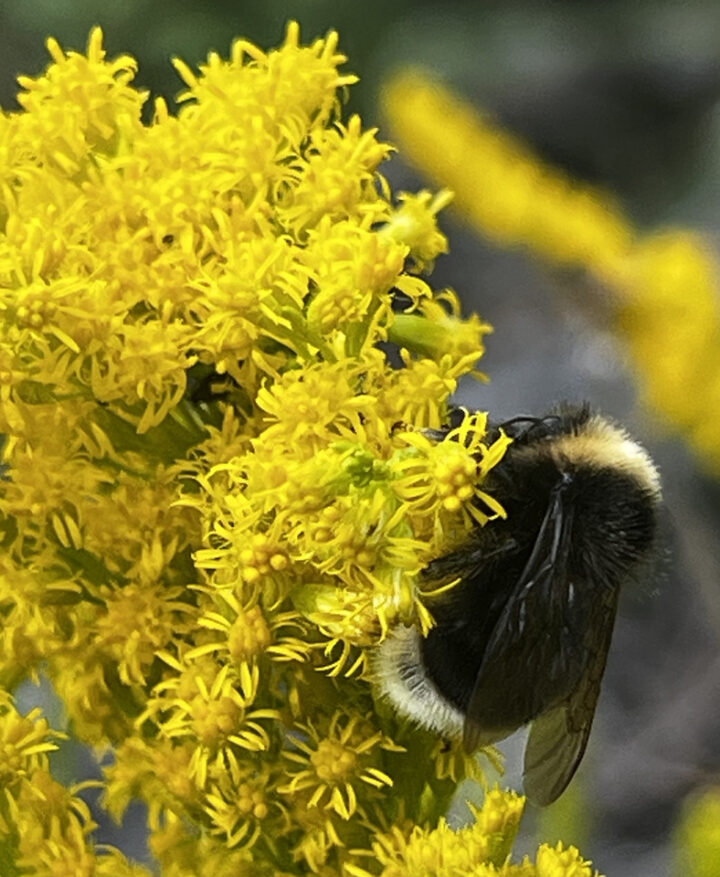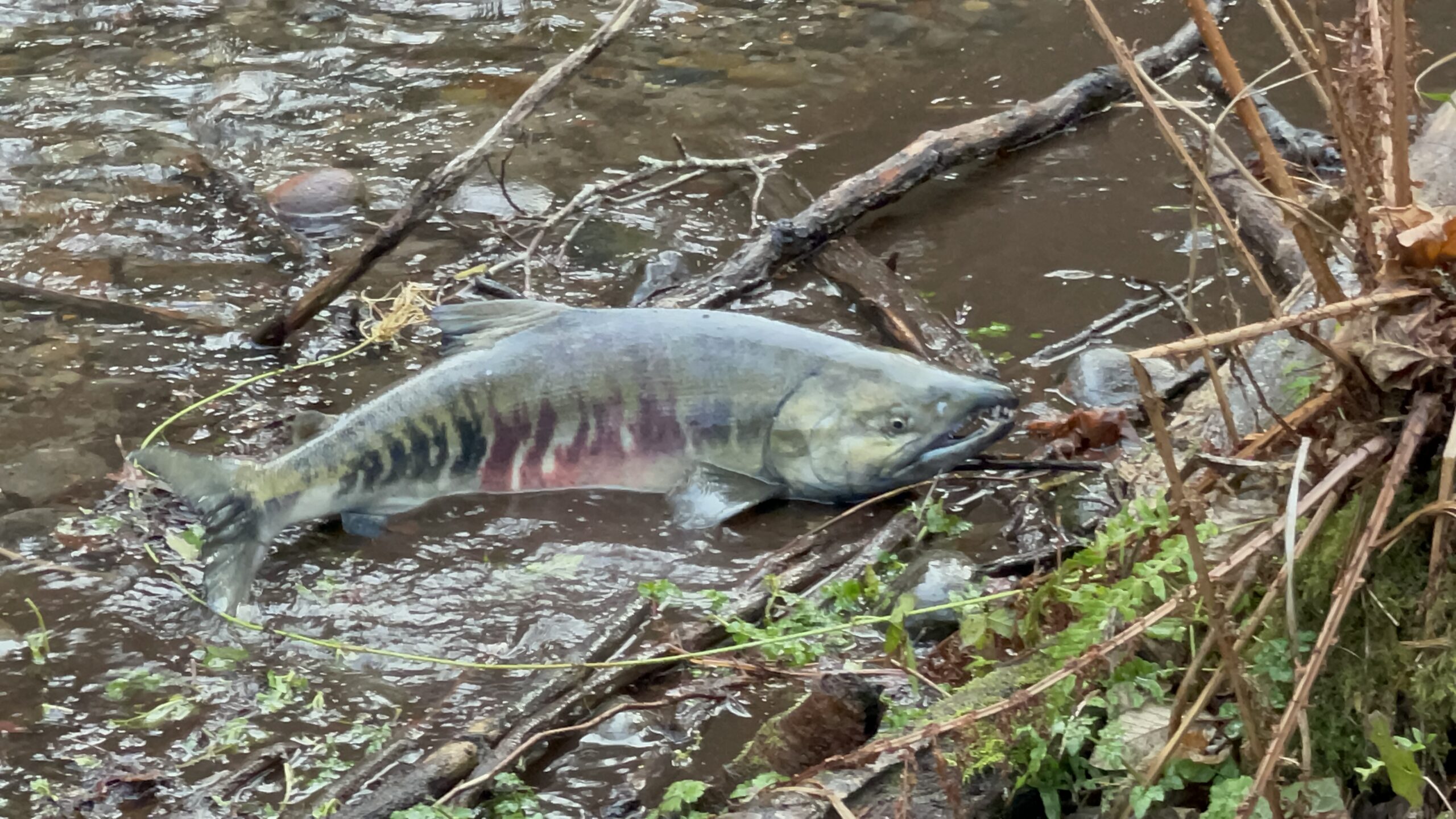Species Spotlight: Western Bumble Bee (Bombus occidentalis)
This month, we cast the Species Spotlight on the Western Bumble Bee!

While its coloring varies, it is commonly identified by a black abdomen and a tail that appears to be dipped in white.
Upon visiting one of our properties north of Ashford, Stewardship Manager Jake Pool found 14 different pollinators on one goldenrod patch in just 30 minutes of observation! Among these was the Western Bumble Bee.
The Western Bumble Bee is native to the west coast of the United States and Canada. What was once a common species across a vast region is now in decline and even considered quite rare.
As a generalist pollinator, the Western Bumble Bee is very important to the local ecosystem, pollinating a wide variety of flowering plants. It lives in small, annual colonies that depend on diverse flora, as well as logs, stumps, and abandoned nests throughout the nesting season. It prefers the cooler temperatures found in subalpine and montane areas.
Currently, the Washington Department of Fish and Wildlife has classified its sensitivity to climate change as Moderate-High, as shifts in temperature, precipitation, and snowpack impact its nesting and other practices.
Conservation Concerns
The Western Bumble Bee is currently designated as a Species of Greatest Conservation Need under the State Wildlife Action Plan, as well as a Priority Species under the WDFW Priority Habitat and Species Program. In a study conducted by the U.S. Geological Survey alongside bumble bee research groups, data showed a 93% decline in occupancy from 1998 to 2018. This trend of decline has continued, and recent surveys in Washington show a small number of remaining populations across the state. WDFW has requested that these be reported whenever seen.
NLT Protects Habitat
Much of our field work by partners, volunteers, and staff includes planting native plants such as Willows, Maples, Goldenrod and Pearly Everlasting, as well as invasive weed management across Nisqually Land Trust properties. By replenishing these plants which are especially popular among pollinators, we hope to support a healthy habitat for the Western Bumble Bee, along with many others.
Photo/Video Credit: Jake Pool




